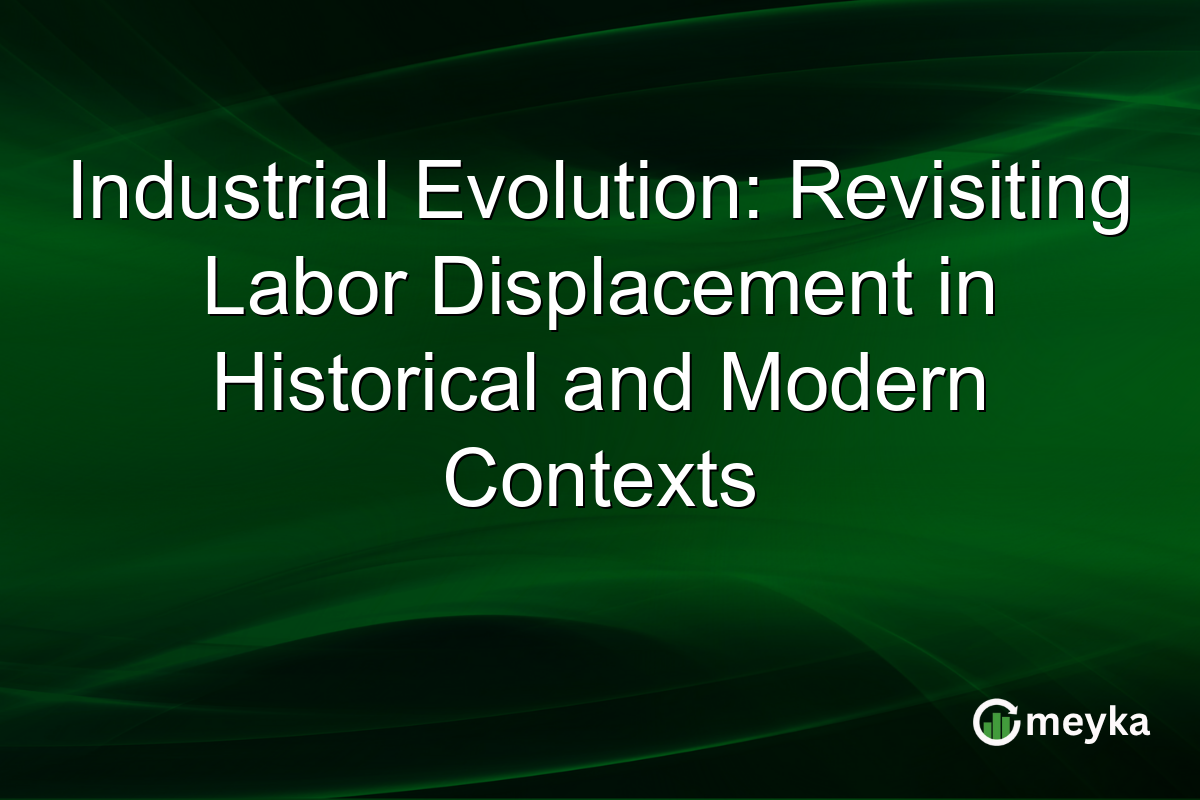Industrial Evolution: Revisiting Labor Displacement in Historical and Modern Contexts
The Industrial Revolution marked a pivotal era of transformation, significantly influencing labor markets through the introduction of machinery. Fast-forward to today, similar concerns about labor displacement have arisen due to automation and AI. Understanding these parallels provides key insights into evolving labor dynamics. Investors and industries must navigate these changes effectively, as automation continues to reshape labor markets.
Historical Labor Displacement: The Industrial Revolution
The Industrial Revolution, beginning in the late 18th century, was a time of remarkable change. Machines revolutionized textile production, mining, and transportation. These advancements led to significant labor displacement, as workers found themselves competing with machines for jobs. This phenomenon prompted widespread social unrest and was a catalyst for movements advocating labor rights.
The adoption of steam engines and mechanized looms displaced skilled artisans, sparking fear and resistance among the workforce. However, it eventually led to the birth of new industries and job opportunities.
Learning from this era, we see patterns in how technological advancements influence labor markets. Understanding how society adjusted then provides valuable lessons for current challenges.
Modern Automation: The New Wave
Today, automation in industry is reshaping the labor landscape. Robotics, AI, and machine learning are streamlining production faster than ever. This shift is reminiscent of the Industrial Revolution’s impact. Current trends show factories increasingly using automated processes, reducing the need for human labor in repetitive tasks.
Recent discussions in forums like International Socialist Review highlight concerns about job security and the economic divide. Yet, automation also offers opportunities for new job creation in technology and services sectors.
For investors, understanding these shifts is essential to anticipate market trends and identify potential growth areas.
Lessons from Historical Trends
Historical automation trends reveal vital lessons for today’s industries. During the Industrial Revolution, economies eventually adapted, leading to increased productivity and innovation. Today, as technology evolves, similar adjustments are necessary.
Industries must focus on retraining and upskilling workers to fill new roles created by automation. This includes roles in AI management, data analysis, and equipment maintenance. Education systems and corporate training programs play crucial roles in this evolution.
For investors, recognizing these trends can help align portfolios with companies emphasizing adaptability and innovation.
Final Thoughts
The parallels between historical and modern labor displacement due to machines are striking. As we delve into the lessons of the Industrial Revolution, it becomes clear that while technology can displace jobs, it also paves the way for growth and innovation. Today, automation in industry echoes these dynamics, posing challenges and opportunities for both workers and investors.
Industries need to embrace change by focusing on workforce development and innovation. For investors, this moment offers a chance to invest in companies poised to lead this transformation through adaptive strategies and cutting-edge technologies.
Meyka, an AI-driven platform, provides real-time insights into these trends, helping investors make informed decisions in this ever-evolving landscape.
FAQs
The Industrial Revolution brought machines that significantly changed labor markets. It displaced many artisans and manual laborers, but it also led to new industries and job creation over time.
Modern examples include manufacturing plants using robotics and AI to optimize production. This reduces the need for manual tasks, shifting the workforce toward tech-driven roles.
Industries can adapt by investing in training and education programs that upskill workers for new roles in technology, AI management, and equipment maintenance.
Disclaimer:
The content shared by Meyka AI PTY LTD is solely for research and informational purposes. Meyka is not a financial advisory service, and the information provided should not be considered investment or trading advice.






